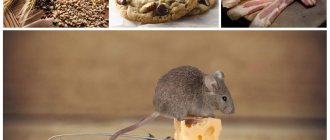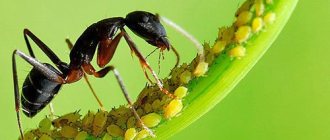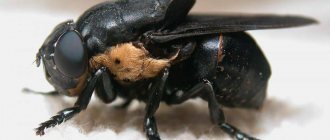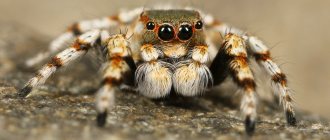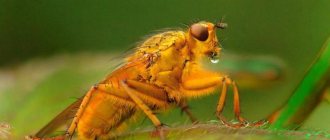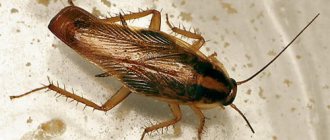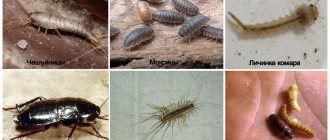The biggest rat in the world
Such a rodent is the woolly Bosavi, which was found by scientists in New Guinea. Its dimensions can reach 1 m and weight up to 1.5 kilograms. They are otherwise called giant marsupial rats.
The woolly Bosavi is similar in size to a small dog. They are not shy and friendly towards humans. This is due to the fact that they were found far from civilization, and the animals had no contact with people. You can even pick them up and stroke them without fear; the rodent will not bite.
Where live
The name giant rat is applied to various species of large rodents. They live:
Africa
- Gambian, Cricetomys gambianus;
- Giant genus Cricetomys;
- Malagasy, Hypogeomys antimena.
Asia and New Guinea
- Flores, Papagomys armandvillei;
- Mountain giant Sunda, Sundamys infraluteus;
- Giant southern Phloeomys cumingi with thin tails, northern Luzon Phloeomys pallidus;
- Giant white-eared rats, Hyomys dammermani, Hyomys goliath;
- Great bamboo, Rhizomys sumatrensis.
South America
- Nutria or river rat;
- Capybara, genus Hydrochoerus;
- Woolly, Kunsia tomentosus;
- Burrowing, Kunsia.
Extinct species
- East Timorese, genus Coryphomys
- Tenerife, Canariomys bravoi.
Large pet rats
You can often find some types of rats as pets. With different colors, sizes, habits. Keeping rodents does not require large expenses; they are unpretentious. Both special food from a pet store and human food are suitable as food. Unfortunately, they are not long-lived; they live 2-4 years. Therefore, it is not recommended for overly impressionable people to have such a pet. What are the largest domestic rats?
Breed "standard"
They are the largest and most common among domestic rodents. The pet can grow up to 30 cm in length and reach a weight of 300-500 grams. They are friendly towards humans and do not bite.
They quickly get used to it and can sit on their hands or shoulder for hours. Their cage needs to be cleaned at least once a week. There must be fresh water in the drinking bowl, and there must be grain in the feeder. Cases of their friendship with other pets are not uncommon. They live from 2 to 4 years.
Large brown rats
They are also among the large domestic rodents. They grow up to 20 cm in length and weigh 100-150 grams. They are also omnivorous and unpretentious. They love to be taken out for walks. There is a slight inconvenience in this, because not all people have a positive attitude towards rats, even domestic ones. Another disadvantage is that this species lives only 2 years, sometimes up to three years.
Rats "Dumbo"
They differ from other species in the structure and location of their ears. The Dumbo breed's ears are round and wide, protruding, and positioned lower than those of other species. They reach 18-20 cm in length and can weigh from 250 to 500 grams. The body shape of the animals is similar to a pear. Females of this species are slightly smaller. Rodents are very affectionate and can remember their name. They eat grains, greens, vegetables. The Dumbo breed is also fed boiled and raw chicken, fish, and cottage cheese. Rodents live 2-3 years, but with proper care they can live from 4 to 5 years.
Features of caring for decorative rats
Rats do not require too much space; they only need a small cage with ladders of various shapes, a house, a hammock, a wheel, where they can run or play with any other accessories.
They are also particularly unpretentious in nutrition and are considered omnivores. However, as for the correct diet, it definitely must be present, since the rodent needs all the useful substances and microelements for good health and excellent mood. It is enough to feed rats twice a day, morning and evening. At night the portion should be larger.
This is due to the fact that these creatures are nocturnal inhabitants. The diet must contain grains, cereals, vegetables, fruits, and dairy products. Don't forget to regularly change the water in the drinking bowl so that your pet doesn't suffer from thirst.
The main disadvantage of these cute creatures is their short lifespan. In general, rats do not live longer than three years, and this applies to absolutely all breeds. Therefore, an important piece of advice when you buy a pet is to choose a rat that is no more than one and a half months old.
With proper care, any breed of domestic decorative rat you like will always delight you and your child with excellent health and good mood.
Wild big rats that live in Russia
In Russia, rats can be found almost everywhere. They live in natural conditions and often settle near human habitation. Among them are such species as: black and pasyuk (gray).
Pasyuk often lives in sewers, basements, warehouses, and sheds with animals. They grow up to 25 cm, the tail is about the same length. The weight of this species reaches 400 grams. Rarely, but there are individuals weighing 500 grams.
There are known cases when a gray rat attacked a person. True, she does this mainly for self-defense. They are omnivores and accumulate in large numbers in landfills and garbage dumps. They are carriers of various diseases. Capable of chewing through metal and concrete. They multiply very quickly. At the age of three months they are able to bear offspring. The number of pups in a litter reaches 20.
Chernaya settles mainly in the southern regions of Russia. Prefers dry rooms and attics. But in nature it settles near rivers and lakes. And their favorite habitat is sea ships.
The black rat is smaller in size than the Pasyuk. It is up to 22 cm long, with a tail of 28 cm. And the weight of this species is from 130 to 300 g. The coat color is black, hence the name of the species. It eats grains, fruits, vegetables, worms, insects, bird eggs. There can be up to 15 pups in the litter. The lifespan of these rodents in nature is on average 1 year.
Natural sizes of rodents
A person is periodically bothered by 2 types of rats – gray, black. These representatives of the mouse genus are found in sewer hatches, underground, basements, cellars, near garbage cans, and in abandoned buildings.
Black and gray rats
With the approach of cold weather, with a lack of food, and with a significant increase in the population, wild rats gain impudence and visit humans. This type of large pest can be seen in the barn, outbuildings, chicken coop, gardens, vegetable gardens, and in your own home. In some cases, rats can attack humans.
The length of the animal reaches 25 cm excluding the tail. The length of a rat's tail can be commensurate with the length of its body. The natural size of the animal is impressive and raises the question – is this really not the limit? In its natural environment, a rat never grows to the size of a cat, let alone a dog. The weight of an adult individual is only 400 g. The largest individual of this species weighs 500 g. It is also known what sizes rats are in laboratory conditions.
No one was specifically involved in breeding large species of giant rats. Animals are of no value to humans; they are not eaten. Therefore, there is no point in breeding a breed the size of a wild boar. Artificially created breeds of white rats reach 500 g in weight, and do not differ much in length. The large size of a pet is more related to constant access to food - overfed.
On a note!
Rats and cockroaches are able to live in conditions of increased radiation. Where other creatures die, these representatives of the fauna adapt to new conditions and mutate. Radiation affects natural processes in the body and provokes growth. In the exclusion zone, plants of unrealistic sizes, giant vegetables, fruits, cockroaches, and rats were seen. No special studies have been carried out to see how capable a rodent can grow under such conditions. But a significant increase in dimensions is allowed.
The maximum size of a gray rat is about 25 cm in length excluding the tail, a black rat is up to 22 cm. A white rat can grow up to 30 cm - this is its limit. The maximum weight for a gray pasyuk is 400 g, for a black rat – 300 g.
There are larger specimens in the world. They are found in countries with a warm tropical climate, do not harm people, and even bring benefits.
Mutant rats
You can often hear incredible stories about gigantic rodents inhabiting subways and abandoned military facilities. But all this is just a wild fantasy of people who are bored of living without myths. And the yellow press thus attracts readers, increasing the sales of their newspapers and magazines.
Someone, having read it, retells it and exaggerates it to make it look more impressive. In fact, the largest rat in Russia is the Pasyuk. In subway tunnels, at military installations, they are all the same as in everyday life, in full view of people. There may be larger specimens, but this is not the result of mutation, but simply from the “good” life of rodents.
Which rodent is better to have in an apartment?
According to the size of the apartment, the pet living in it is chosen. Large rodents such as rabbits are not easy to keep in a small home. But rats, hamsters, gerbils and chipmunks will not notice the modesty of square meters.
It is worth considering your readiness for household chores. Even small animals need to regularly clean the toilet and change the bedding. Chinchillas and gerbils are cleaner than other rodents.
Hairless breeds of rodents: hairless rat, skinny guinea pig, etc. will reduce cleaning and help avoid allergies.
Animals that look like rats
Almost any rodent can be called a rat. This is facilitated by the rat-like structure of these animals. However, they belong to different species and not to the same species.
Such animals include:
- Capybara. It is the largest rodent in the world. Its appearance simultaneously resembles a rat, a dog and a boar. It reaches a length of 1.35 m, a height of 60 cm, and the weight of adult animals is from 65 to 90 kg.
- Beaver. Lives near bodies of water. It feeds on tree bark and young shoots. It grows up to 1.3 m in length and weighs up to 32 kg.
- Nutria. Lives near bodies of water and is an excellent swimmer. Feeds on plant foods. It grows up to 60 cm in length and weighs up to 12 kg.
- Marmot-boobak. These animals live in deep burrows located in the steppe. They weigh up to 10 kg and reach a length of up to 70 cm. The diet of marmots includes plant foods, as well as insects. Rodents live up to 10 years.
- Mongoose. This animal is also somewhat similar to a rat. Only he has a fluffy tail. It grows, depending on the species, from 18 to 75 cm, weight from 280 g to 5 kg. It lives for about 8 years, but at home or in a zoo it lives twice as long. It feeds mainly on protein foods.
Large closest relatives of rats
There are many wild rodents on planet Earth that resemble pasyuks in appearance. Of course, fans of horror stories often photograph relatives of rats to confirm tales of aggressive gray mutants, but these mammals have nothing to do with the genus Rattus.
Giant pouched rat
The giant marsupial or Gambian rat lives in Africa; the large rodent grows up to 90 cm in length, with a body weight of up to 1.5 kg. In appearance, the smartest mammal, indeed, resembles a huge gray pasyuk, but is a close relative not to rats, but to mice.
In addition, the marsupial rat in no way belongs to the marsupial animals that have a pouch for bearing newborns. The cubs of the huge rodent are born ready for life in the external environment and live with their mother in a nest.
The name “marsupials” was given to large African animals for the large cheek pouches in which Gambian rats carry food like hamsters.
Giant pouched rat
The giant rodent, like pasyuki, is an omnivore that uses fruits, vegetables, termites and snails for food. Unlike rats, the African mammal suffers from poor eyesight, which is more than compensated by a very developed sense of smell. This feature of the African rodent is successfully used by the Belgian organization ARORO, which trains intelligent animals in the detection skills of tuberculosis and anti-personnel mines. Thanks to its high intelligence and peaceful nature, the giant marsupial rat even became a pet in southern countries.
Great cane rat
Another large rodent that lives along the shores of African water bodies. The favorite habitat of the large cane rat is thickets of bushes near rivers and lakes, swampy places, cultivated plantations and human settlements. The fluffy mammal has a very dense build; with a height of 60 cm, it reaches a weight of up to 9 kg. The local population successfully hunts reed rats, using the animal's meat for food.
Great cane rat
A well-fed rodent swims very well and often spends most of its time in the water. Unlike the omnivorous grass rats, cane rats are exclusively herbivores, feeding on sugar cane, corn, pumpkins, yams and elephant grass. Attacks by numerous flocks of large rodents cause serious damage to agriculture, so African farmers use pythons and mongooses that eat pests to protect their fields.
Large bamboo rat
A large, furry rodent that lives in southern China, northern Burma and Thailand. The large animal grows up to 50 cm and has a body weight of up to 4 kg. The main habitat of the large mammal is burrows and long underground passages, which rodents dig with their powerful claws. The animal feeds on plant foods: bamboo roots and stems, as well as the fruits of tropical trees.
Large bamboo rat
A large bamboo rat became the star of Internet videos after a Chinese resident caught a huge specimen of this species weighing 11 kg!!! But, unfortunately, this record was not recorded anywhere, and remained only in the form of an impressive photograph of a short Chinese man with a giant gray rodent in his hands.
Capybara
The capybara or capybara is rightfully considered the largest rodent on the planet. Animals have a body length of 1-1.4 m with a weight of up to 65 kg. Externally, the capybara resembles a huge, well-fed guinea pig, but not a rat, so it is extremely difficult to mistake a waterfowl rodent for a huge goat. The mammal, unlike rats, has a large rounded head with a blunt muzzle, a massive overweight body with short legs with swimming membranes.
Capybara
The capybara lives exclusively in countries with warm climates: Argentina, Venezuela, Brazil, Colombia, Peru, Uruguay. Capybaras choose the banks of large rivers for their homes, but when there is a lack of food, the animals move overland over long distances. For nutrition, rodents use only plant foods. Due to their large size and tasty pork-like meat, capybaras are bred on farms in Venezuela. Mammal skin is used to make leather goods, and the fat is used in the pharmaceutical industry.
Giant Afghani and Pakistani rats
This is another story from the section of myths and legends. It dates back to the 80s, associated with owners of dachshund dogs. As if the behavior of these pets was similar to the habits of rats.
The animals could spontaneously attack the owner and bite him. And when examined by veterinarians, it seemed to turn out that this was not a dachshund at all, but a giant rat from Afghanistan or Pakistan, sold to the owner in order to deceive him.
In fact, the rats in these countries are the same as in Russia. But a rodent has not yet been found in nature that is so similar to a dog.
conclusions
Not all rodents that resemble rats are members of the genus “Rattus”. However, almost all pet rats, even the fancy ones, are “Rattus norvegicus,” or Norway rats. The body of the pests is about 20 cm, a much greater variety of sizes exists in the wild, where some species of rat-like rodents reach the size of raccoons.
Gambian rats with giant pouches are called the world's largest rats. But those discovered in Papua New Guinea are just as huge, and those raised like cattle in China are hefty.
Prehistoric rats
Scientists have found that ancient rodents lived in South, Central and southern North America. From excavations of skeletons, it was found that prehistoric rats were much larger than their modern relatives. Externally similar to beaver, capybara, pacarana. Ancient rats (telikomys, phoberomys) grew up to 2 m, and their weight reached 680 kg. Mostly ancient individuals ate plant foods, but there were species with other preferences.
Rats are very interesting, and having studied their habits, a person will not be so wary of them. Rodents are used in laboratories, and in some countries they are eaten. But there are also countries where rats are revered and protected as sacred animals. There is even a temple in India where rats are fed, watered and protected from trouble. Now you know which rats are truly the largest in the world.
Great article 2
Justified and unfounded fears
In the last century, Moscow newspapers published an article about giant species of rats that were found in the outback of the local metro. They began to crawl to the surface and attack people. The giant rats were similar in size to dogs, had red eyes, yellow plaque on their teeth, and a terrible grin. Large monsters with a terrifying appearance.
With the development of the global Internet, horror stories about rodents increasingly began to appear on the pages of websites. The Chinese presented a photo of the largest rat in the world, holding the huge monster by the tail. The weight of the animal reached several kilograms.
Thanks to such horror stories, people began to have justified and unfounded fears. No one wants to meet a hungry monster with a terrible look on their way. How big can a rat grow? Is there any reason to worry?
Danger to humans
The confrontation between humans and rats has lasted for thousands of years. In our time, such a struggle has received an official name - rodent control. Despite its notoriety in Europe and many other countries, including the Americas, in some countries of the East this rodent received the status of a divine animal that symbolizes wealth, wisdom, prosperity, etc. The negative image of this rodent is associated with several plague epidemics in Europe, which were carried by rats.
Some species of rats cause serious damage to agricultural crops because they simply destroy crops. Therefore, in such conditions, people resort to various methods of protecting crops from rodent invasion. In some cases they are simply scared away, and in others they are physically destroyed. Currently, rats pose a serious threat to the health of all humanity, since these rodents carry pathogens of dangerous diseases. The danger of their vital activity also lies in the fact that these rodents are able to completely unnoticedly penetrate into a human home through sewage and ventilation systems.
Despite the constant and serious fight against rats and other rodents, it has not yet been possible to completely destroy them, but it is still possible to control the populations of these pests.
Experts have established certain norms for deratization, which is associated with the optimal percentage of freeing the territory from rodents.
Therefore it is considered:
- 80% – the result is satisfactory.
- 90% is a good result.
- 95% is an excellent result.
In this regard, it is generally accepted that the task of special deratization services is to maintain in a certain area an acceptable percentage of rodents that would not be able to cause much damage to human life.
Harm and benefit
Rodents that live only in nature rarely bother people. All they can do is gnaw vegetables in the garden or grain in the fields. The Pasyuk house rat is much more unpleasant. There are two varieties here - those who live with people constantly, and those who move to people only in cold weather. Both are capable of completely destroying food supplies, cutting off power to homes and entire areas by gnawing through wiring, eating the paws of poultry and rabbits, killing rabbits, chickens and other chicks. But the worst thing is that rats carry plague, typhus, Q fever, salmonellosis, helminths and other infections. For all these reasons, people are constantly fighting with pasyuks, poisoning them, setting traps.
But on the other hand, it is rats, thanks to their fantastic fertility, that are the main experimental animals on which they test medications, conduct a bunch of experiments, infecting them with all sorts of diseases, in order to later find a cure for them. Therefore, despite the damage caused by pasyuks, you need to have some respect for them.
Animals in captivity
Capybaras can be seen very often in zoos. These animals are quite easy to tame, which is why they are popular pets today. But keeping rodents is not so easy. These animals cannot stand loneliness, so they must have constant company. In addition, capybaras must be provided with a body of water in which they can swim. A swimming pool is most suitable for this, so it is recommended to keep animals in private homes.
In captivity, capybaras eat grass, various fruits and vegetables. They also love grain, and some individuals even refuse ice cream. Their body does not produce vitamin C, so it is worth purchasing food with a specially selected composition. Also, owners of these beautiful animals should remember that capybaras need to grind down their constantly growing teeth. It is better to provide them with some hard wood, otherwise they will attack the furniture.
Read with this

